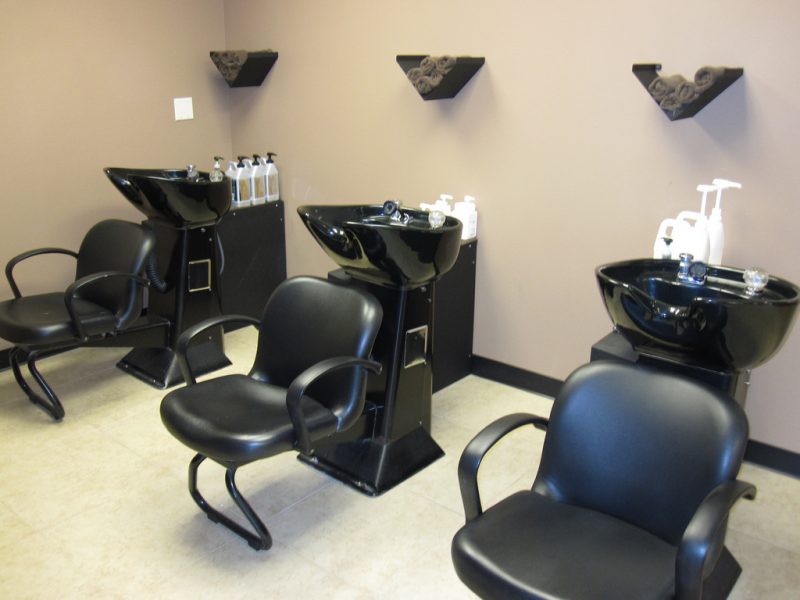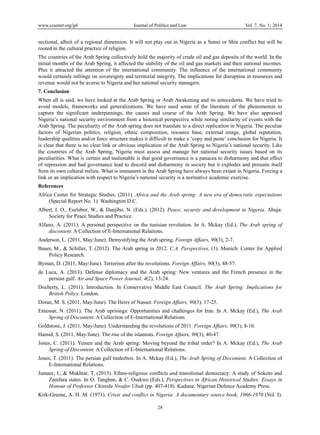Assessing The Health Impact Of Synthetic Hair Braids On Black Women

Table of Contents
Millions of Black women embrace synthetic hair braids for their versatility and aesthetic appeal. From intricate cornrows to flowing box braids, these styles offer a fantastic way to express individuality and creativity. However, the long-term health implications of these popular hairstyles remain a significant concern. This article will delve into the potential health impacts of synthetic hair braids, examining both the benefits and drawbacks to provide a comprehensive understanding. We'll explore the risks associated with synthetic hair braids and offer advice on minimizing potential negative effects, helping you make informed choices about your hair care routine.
Traction Alopecia and Hair Loss from Synthetic Hair Braids
Traction alopecia is a form of hair loss caused by prolonged pulling or tension on the hair follicles. Synthetic hair braids, particularly when tightly braided or worn for extended periods, significantly increase the risk of traction alopecia. The weight of the synthetic hair, combined with the tension from the braiding itself, puts considerable stress on the hair follicles, leading to damage and eventual hair loss.
Risks associated with synthetic braids: The heavier the synthetic hair, the greater the pull on the scalp. Furthermore, small, tightly braided styles exert more pressure on the hair follicles than larger, looser braids. This constant tension weakens the hair shaft, potentially leading to breakage and follicle miniaturization.
Symptoms: The early signs of traction alopecia may include scalp tenderness, itching, and a receding hairline. As the condition progresses, noticeable hair thinning or bald patches may develop, particularly along the hairline or at the temples.
Prevention: Fortunately, hair loss from synthetic braids is often preventable. By adopting certain practices, you can significantly reduce your risk.
- Choose lighter weight synthetic hair. Opt for lighter extensions to minimize the strain on your hair follicles.
- Avoid extremely tight braiding. Loose braids allow for better scalp circulation and reduce tension on the hair.
- Take breaks from braids to allow the scalp to breathe. Give your hair and scalp a rest between braiding sessions to reduce stress.
- Consider protective styles that minimize tension. Explore alternative protective styles like loose twists or braids that don't pull tightly on the scalp.
Scalp Irritation and Infections from Synthetic Hair Braids
Maintaining optimal scalp hygiene is crucial when wearing synthetic hair braids. The braids themselves can trap moisture, sweat, and dirt against the scalp, creating a breeding ground for bacteria and fungi. This can lead to various scalp issues.
Hygiene and scalp health: Regular cleansing is essential to remove buildup and prevent infections.
Infections: Fungal infections, like ringworm, and bacterial infections are common risks associated with poorly maintained braids. Symptoms can include itching, flaking, redness, and pus-filled bumps.
Allergic reactions: Some individuals may experience allergic reactions to certain synthetic hair materials, resulting in scalp irritation, itching, or even contact dermatitis.
Prevention: Taking proactive steps can significantly reduce the risk of scalp problems.
- Wash hair regularly with a gentle sulfate-free shampoo. This helps remove buildup and keep the scalp clean.
- Thoroughly dry the scalp before braiding. Moisture trapped under braids fosters bacterial growth.
- Avoid leaving braids in for extended periods. Give your scalp regular breaks to prevent buildup and irritation.
- Choose breathable materials and avoid overly tight braids. This improves air circulation and reduces moisture buildup.
The Psychological Impact of Synthetic Hair Braids
Synthetic hair braids can have a significant psychological impact, both positive and negative.
Positive aspects: Many women find that braids boost their self-esteem and confidence, allowing them to express their creativity and cultural identity.
Negative aspects: However, societal pressure to maintain specific hairstyles and the time and cost involved in maintaining braids can create stress and anxiety. The pressure to conform to certain beauty standards can negatively impact body image and self-acceptance.
Body image and self-acceptance: Prioritizing hair health over following fleeting beauty trends is essential for overall well-being.
- Prioritize hair health over beauty standards. Your physical and mental health should always come first.
- Embrace natural hair textures and styles. Experiment with various hairstyles that work well with your natural hair.
- Seek professional help if struggling with body image issues. A therapist or counselor can provide support and guidance.
Choosing Safe Synthetic Hair Braids and Styling Practices
Making informed choices about the type of synthetic hair and braiding techniques used can significantly minimize potential risks.
Material selection: Opt for high-quality synthetic hair that is breathable and less likely to cause irritation. Look for materials that are advertised as being gentler on the scalp.
Braiding techniques: Choose less damaging braiding methods. Avoid extremely tight braids and opt for looser styles that reduce tension on the hair follicles.
Professional vs. DIY: Getting braids professionally done has its advantages. Experienced stylists know how to braid without causing excessive tension. However, DIY braiding can be a cost-effective option, but ensure you are using proper techniques.
- Choose high-quality, breathable synthetic hair.
- Opt for loose braiding techniques.
- Seek a professional stylist with experience in protective styling.
- Regularly inspect your scalp for any signs of irritation or infection.
Conclusion:
Synthetic hair braids offer a versatile and stylish option for many Black women, but understanding the potential health risks is crucial. By prioritizing scalp health, using proper braiding techniques, and selecting appropriate synthetic hair, women can minimize the negative effects and enjoy the benefits of this popular hairstyle. Remember to regularly check your scalp for any signs of irritation or infection, and consult a dermatologist or trichologist if you experience any concerns. Make informed choices about your hair care routine to promote healthy hair growth and avoid potential problems associated with synthetic hair braids. Choosing the right synthetic hair braids and caring for them properly is key to enjoying the beauty and versatility of this popular hairstyle while safeguarding your hair and scalp health.

Featured Posts
-
 Exclusive The It Ends With Us Fallout Taylor Swift And Blake Livelys Involvement
May 27, 2025
Exclusive The It Ends With Us Fallout Taylor Swift And Blake Livelys Involvement
May 27, 2025 -
 How To Stream 1923 Season 2 Episode 6 Tonight At No Cost
May 27, 2025
How To Stream 1923 Season 2 Episode 6 Tonight At No Cost
May 27, 2025 -
 Mob Land Season 1 Episode 6 Release Information And Viewing Details
May 27, 2025
Mob Land Season 1 Episode 6 Release Information And Viewing Details
May 27, 2025 -
 Ian Holms Legacy Who Deserves A Return In The Next Alien Movie
May 27, 2025
Ian Holms Legacy Who Deserves A Return In The Next Alien Movie
May 27, 2025 -
 Dylan Efrons Heroic Act Two Women Rescued From Drowning
May 27, 2025
Dylan Efrons Heroic Act Two Women Rescued From Drowning
May 27, 2025
Latest Posts
-
 1968 And 2024 Springs Similarity And Its Implications For Summer Drought
May 31, 2025
1968 And 2024 Springs Similarity And Its Implications For Summer Drought
May 31, 2025 -
 De Laatste Dagen Van Het Derde Rijk Een Beoordeling Van Bert Natters Roman
May 31, 2025
De Laatste Dagen Van Het Derde Rijk Een Beoordeling Van Bert Natters Roman
May 31, 2025 -
 Analyse Van Bert Natters Concentratiekamproman Sterktes En Zwaktes
May 31, 2025
Analyse Van Bert Natters Concentratiekamproman Sterktes En Zwaktes
May 31, 2025 -
 Klimatolerans Noevenyfajtak Valasztasa Az Alfoeldi Termesztesben
May 31, 2025
Klimatolerans Noevenyfajtak Valasztasa Az Alfoeldi Termesztesben
May 31, 2025 -
 Bert Natters Concentratiekamproman Een Indrukwekkend Vermoeiend Portret Van De Nazidagen
May 31, 2025
Bert Natters Concentratiekamproman Een Indrukwekkend Vermoeiend Portret Van De Nazidagen
May 31, 2025
